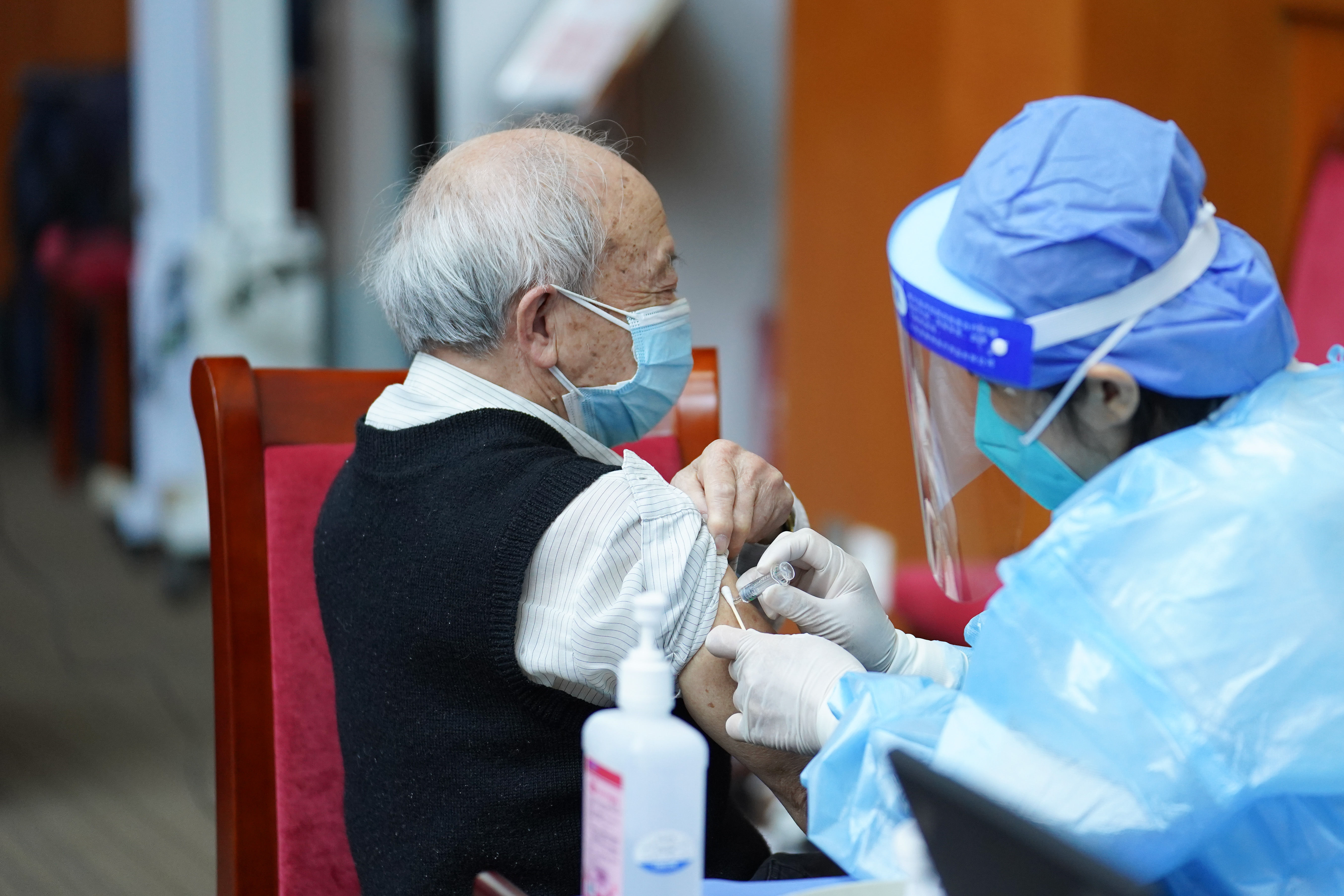The reporter learned from the China Association for Science and Technology on April 22 that the consortium of life science societies of the China Association for Science and Technology and its 23 member societies recently issued an initiative calling for an increase in the proportion of new crown vaccinations and booster shots for the elderly.

On April 18, medical staff vaccinated the elderly against the new crown. Photo by Xinhua News Agency reporter Ju Huanzong
Recently, the national epidemic situation has gradually stabilized, but the impact of cross input between regions is obvious, and the task of “dynamic clearing” in various regions difficult. For unvaccinated elderly people with chronic underlying diseases, the Omicron variant is even more harmful. Data show that there are currently more than 3.3 billion doses of the new crown vaccine nationwide, but there are still more than 50 million elderly people who have not completed the whole process of the new crown vaccine.
The proposal points out that vaccines are recognized by the scientific community as the strongest weapon against the new crown pneumonia epidemic. The whole process of vaccination of the new crown vaccine, especially the popularization of the booster needle, can effectively prevent severe illness and death caused by Omicron. Due to the continued risk of infection in society in the future, the current vaccination situation cannot effectively protect the elderly from the threat of the new coronavirus.
Based on the above facts, the consortium of life science societies proposes to the public that only establishing a solid immune barrier and striving to achieve “all-in-one” vaccination is the most effective anti-epidemic method. Adhere to “dynamic clearing”, seize the precious time window, and do our best to increase the vaccination rate of the new crown of the elderly, especially the vaccination rate of strengthening needles.
The proposal also calls on governments at all levels to formulate appropriate immunization strategies according to the characteristics of the elderly population, so as to provide various conveniences for the elderly to receive vaccines; it calls on scientists to adopt various methods to explain the scientific principles of vaccines to the public. Use scientific thinking, popular language and effective communication methods to answer public questions; it is recommended that medical clinics and scientific research institutes conduct more relevant research to provide a more detailed scientific basis for vaccination of the elderly.